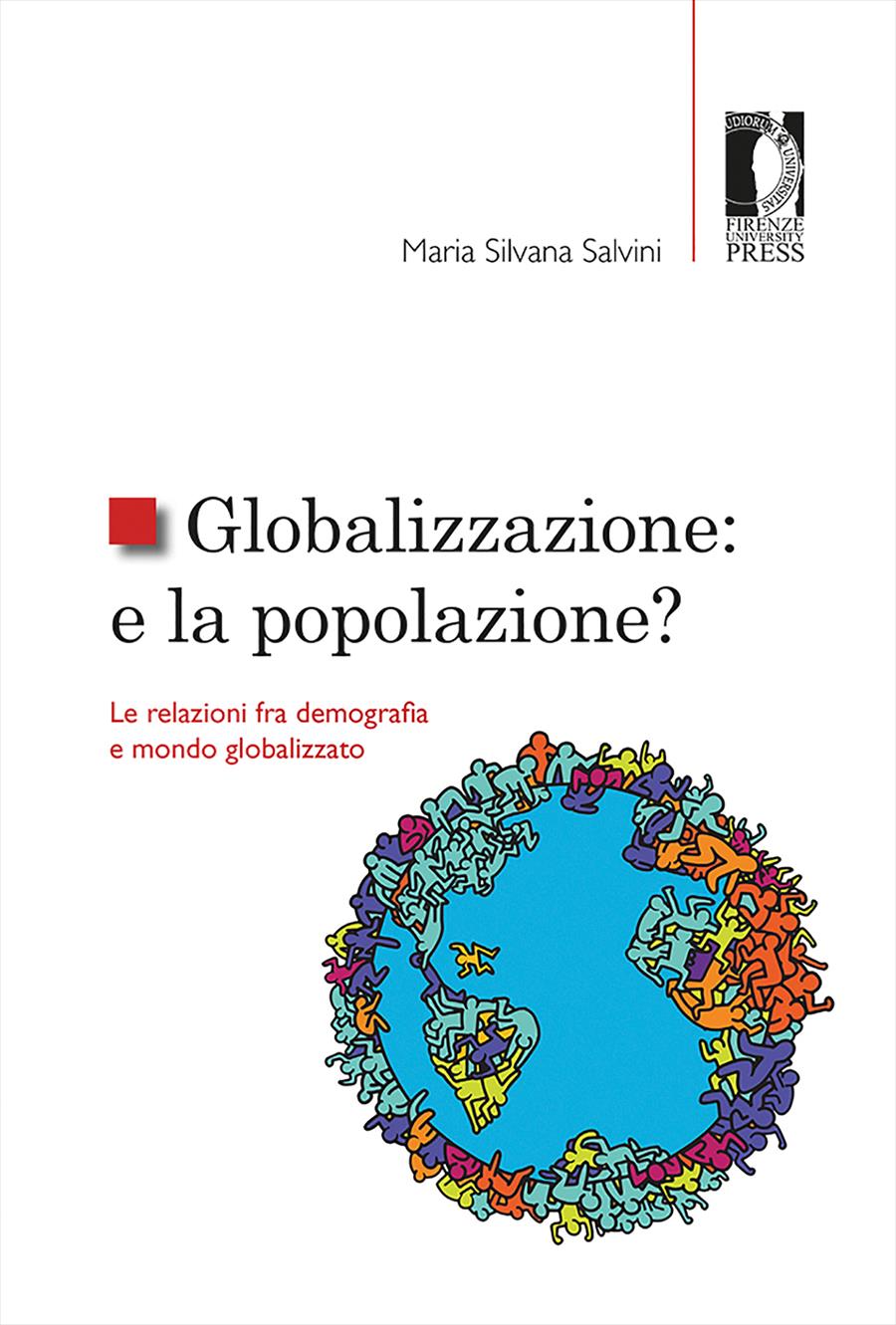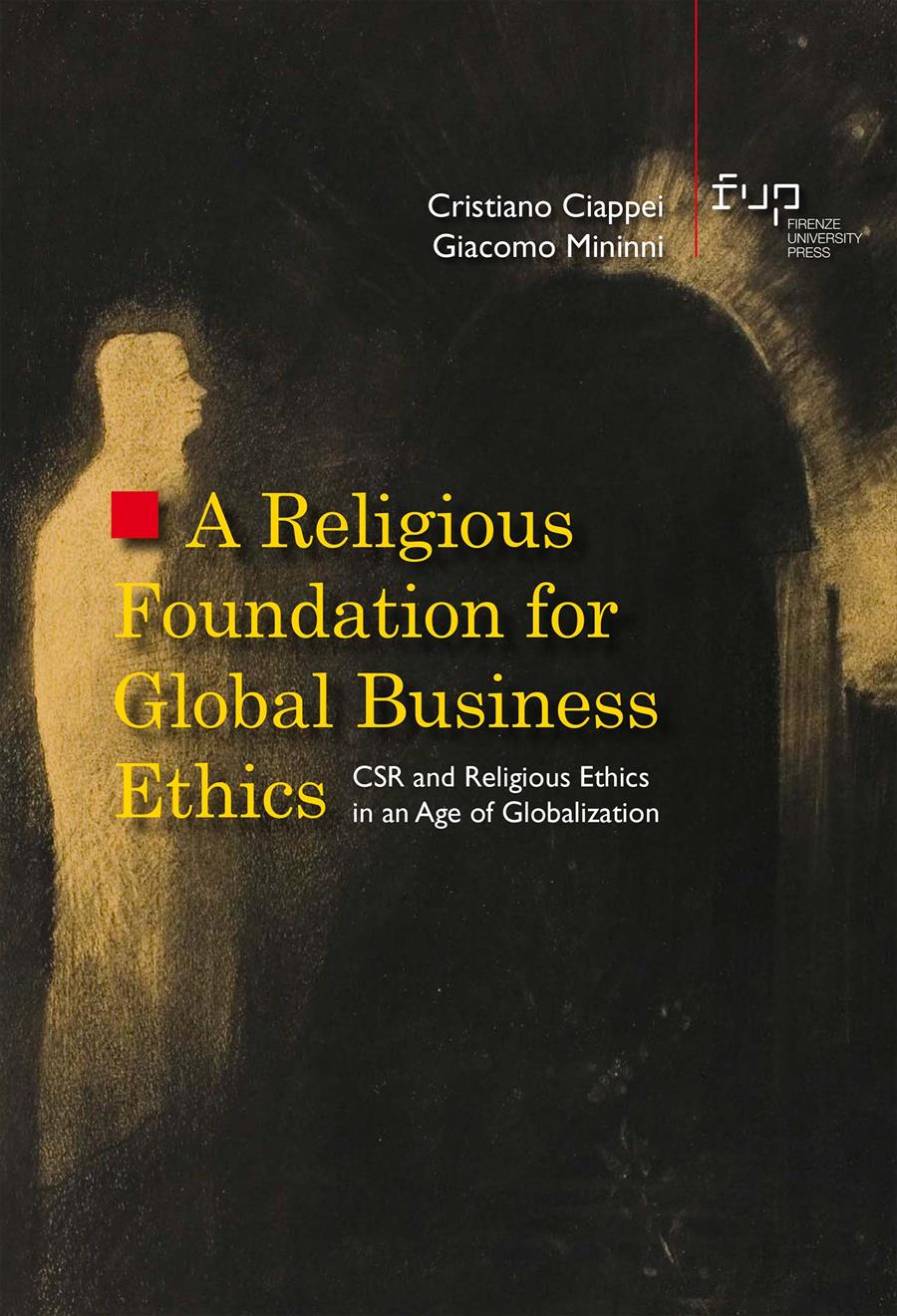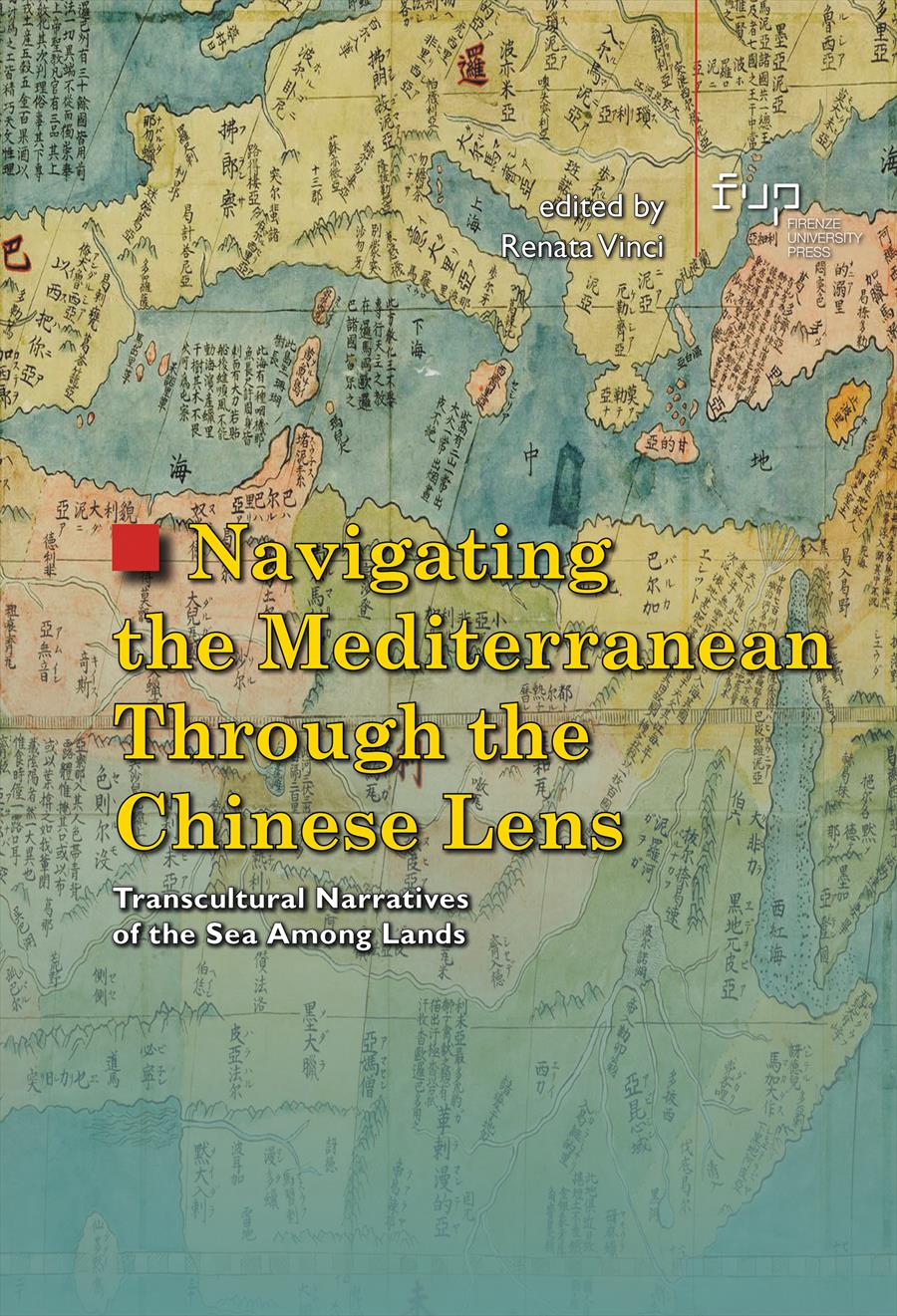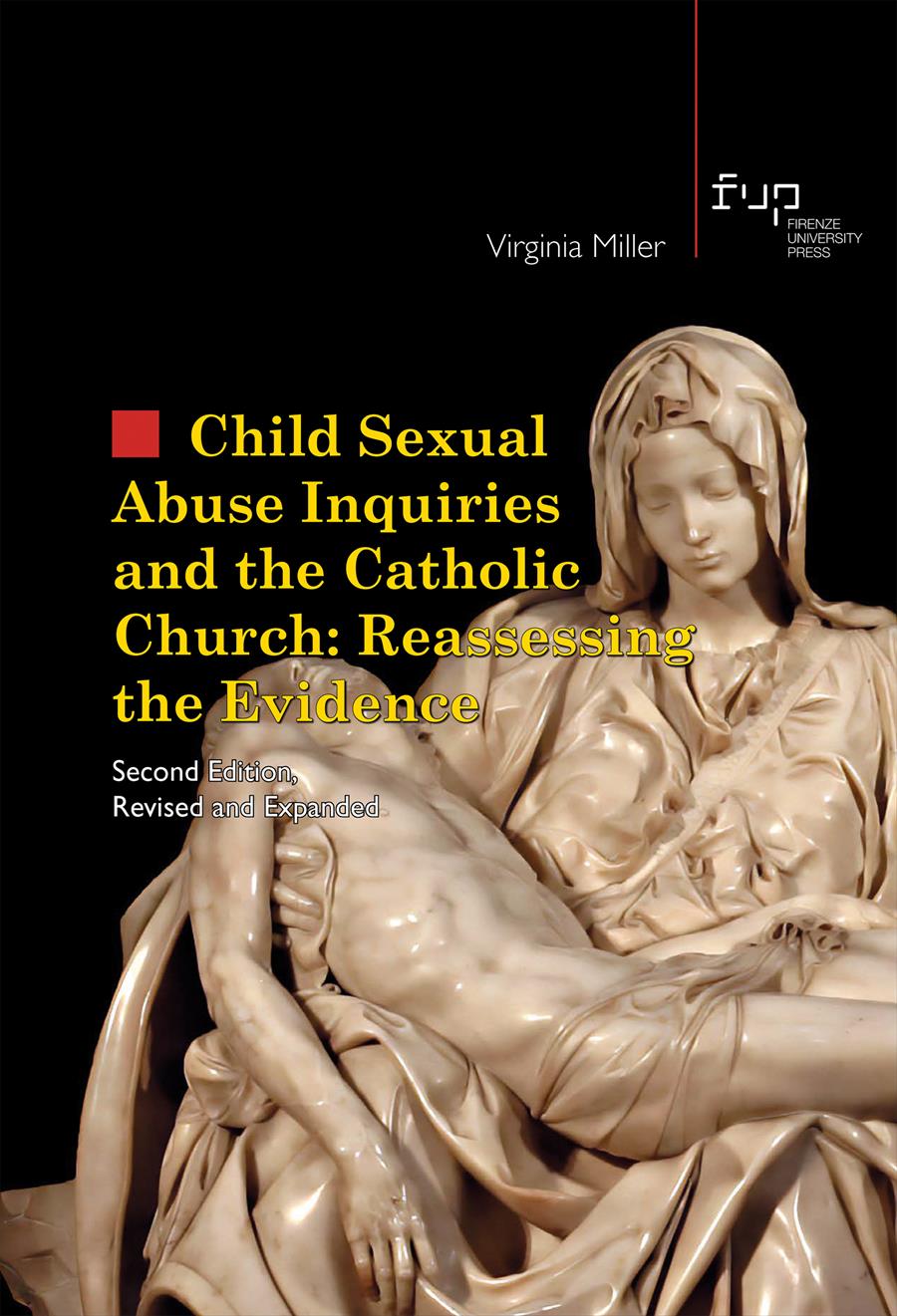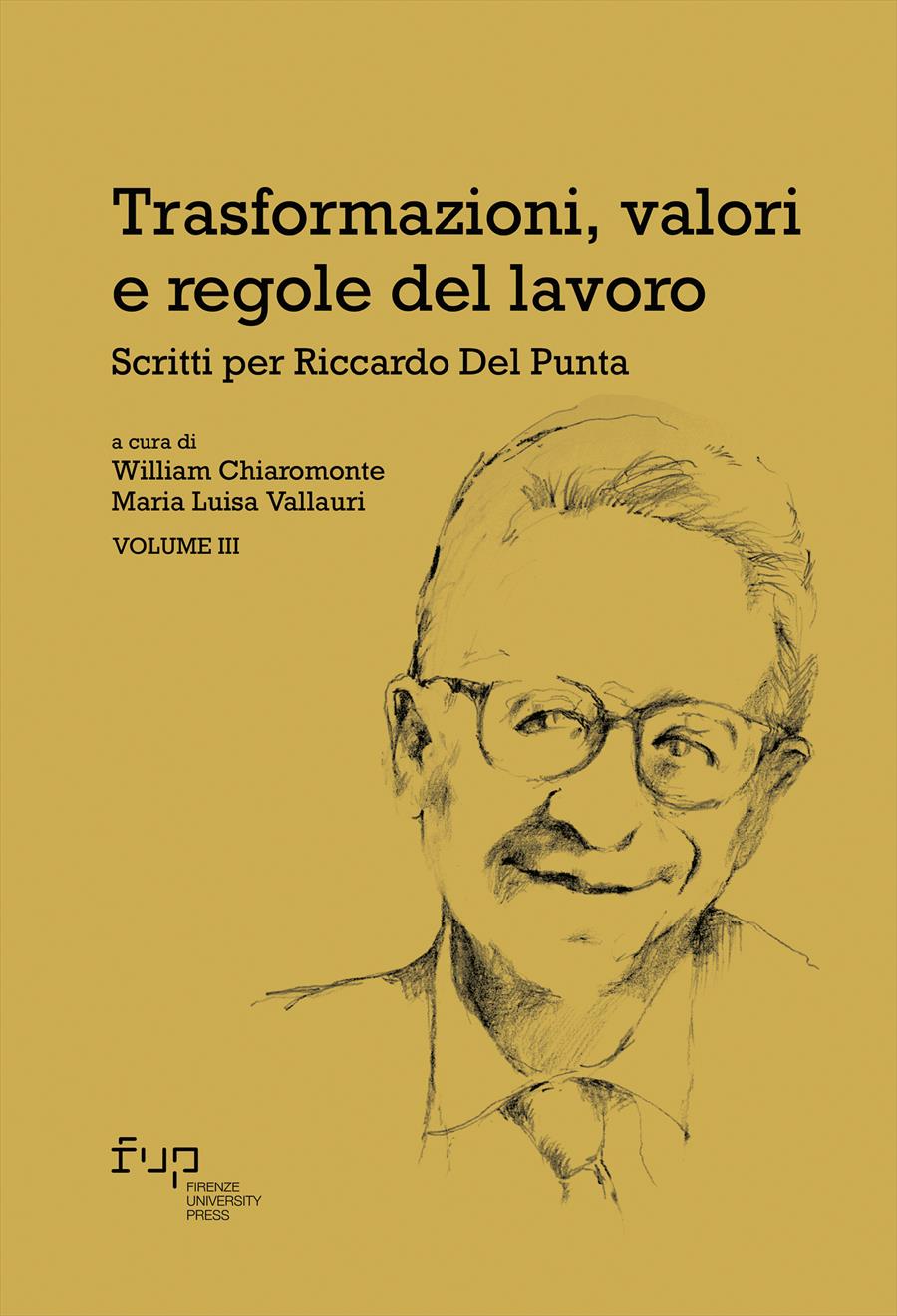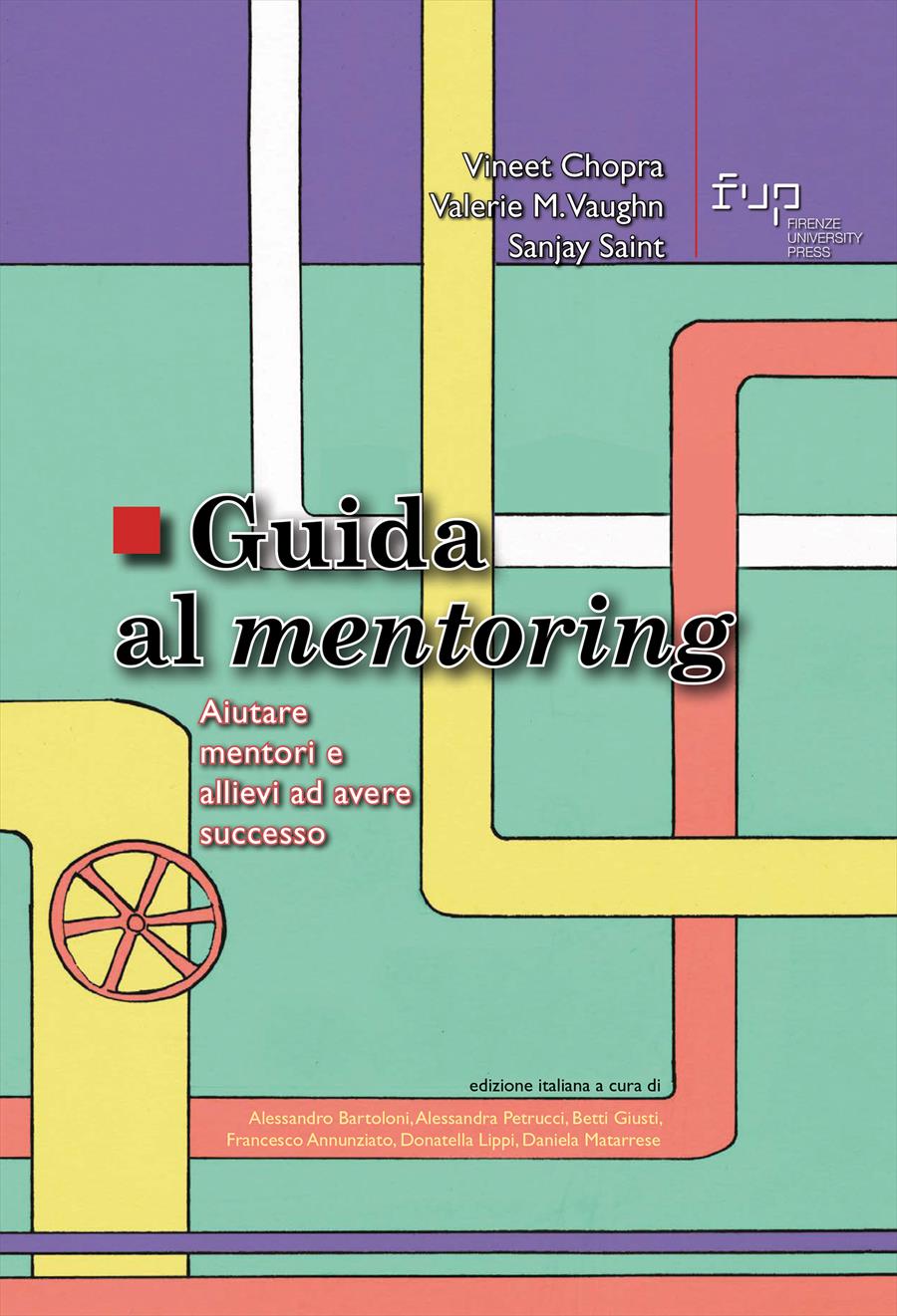Globalizzazione: e la popolazione?
Le relazioni fra demografia e mondo globalizzato
- Maria Silvana Salvini,
Globalization is a huge topic and here we have chosen to describe only a few pieces of a complex mosaic. Its description has a historical perspective and ranges from economic to medical, from social to demographic issues. It aims to reconstruct a background picture that places demographics in the scenario of international relations. It is possible to distinguish some themes: 1. The population is aging and enriching itself. Convergence often collides with delayed demographic transition. 2. The economic weight and political power are shifting towards Asia. 3. The technological revolution affects almost all aspects of society. 4. The increase in energy consumption and new production models make it difficult to manage the scarcity of resources. 5. Interdependence between countries does not go hand in hand with strengthening global governance.
- Keywords:
- Globalization,
- Demography,
- Context,
- Transition,
- Convergence,
- DOI: 10.36253/978-88-5518-439-7
- Series: Studi e saggi
- Scientific Board: Consiglio editoriale FUP
- Language: Italian
- Subjects: Demography Sociology
University of Florence, Italy - ORCID: 0000-0003-0761-1501
- Acemoğlu, Daron. 2020. Machines, artificial intelligence, and the workforce: Recovering and readying our economy for the future. US House Committee on the Budget Hearing
- Acemoğlu, Daron, and Pasqual Restrepo. 2017. “Robots and jobs: Evidence from the US.” VoxEU.org
- AGI Italia. 2020. “La produzione industriale torna a crescere nell’Eurozona.” <https://www.agi.it/economia/news/2020-07-14/eurozona-cresce-produzione-industriale-maggio-9151619/> (2021-06-29)
- AIED. 2020. “Cenni di storia della contraccezione.” <http://www.aied.it/it/contraccezione/cenni-di-storia-della-contraccezione/> (2021-06-29)
- Alon, Titan, Doepke, Matthias, Olmstead-Rumsey, Jane, and Michèle Tertilt. 2020. “The shecession (she-recession) of 2020: Causes and consequences.” VoxEU.org
- Alsop, Ruth, Bertelsen, Mette, e Jeremy, Holland. 2006. Empowerment in Practice from Analysis to Implementation. The World Bank 10.1596/978-0-8213-6450-5 DOI: 10.1596/978-0-8213-6450-5
- Amin, Ash. 1997. “Placing Globalization.” Review Article. SAGE Journals. Theory, Culture & Society. 10.1177/026327697014002011
- Angeli, Aurora e Silvana, Salvini. 2008. Popolazione e sviluppo nelle regioni del mondo. Bologna: il Mulino
- Angeli, Aurora, e Silvana, Salvini. 2018. Popolazione mondiale e sviluppo sostenibile. Bologna: il Mulino
- Appadurai, Arjun. 1996. Modernity at Large. Cultural Dimensions of Globalization, Public Worlds. vol. 1. Minneapolis: University of Minnesota Press
- Appadurai, Arjun. 2015. “Globalization, Anthropology.” In International Encyclopedia of the Social & Behavioral Sciences: Second Edition. 233-38. Amsterdam: Elsevier Inc. 10.1016/B978-0-08-097086-8.12081-1
- Autor, David H., Dorn, David, e Gordon H. Hanson 2016. “The China Shock: Learning from Labor Market Adjustment to Large Changes in Trade.” Nber Working Paper 21906. 10.3386/w21906
- Autor, David, and Elisabeth Reynolds. 2020. The nature of work after the COVID crisis: Too few low-wage jobs. Washington: Brookings Institute
- Baldwin, Richard. 2018. “Commento a La grande convergenza. Tecnologia informatica.” <https://www.pandorarivista.it/articoli/grande-convergenza-richard-baldwin/> (2021-06-29)
- Banca d’Italia. 2021. “Rimesse verso l’estero degli immigrati in Italia”. <https://www.bancaditalia.it/statistiche/tematiche/rapporti-estero/rimesse-immigrati/> (2021-06-29)
- Banister, Judith, Bloom, David E., e Larry, Rosenberg. 2012. “Population Aging and Economic Growth in China.” In The Chinese Economy. International Economic Association Series, edited by M. Aoki, and J. Wu. 114-49. London: Palgrave Macmillan. 10.1057/9781137034298_7 DOI: 10.1057/9781137034298_7
- Barbieri, Francesca. 2019. “Immigrati, boom di rimesse: più di 6 miliardi all’estero. Lo strano caso dei cinesi ‘spariti’.” Il Sole 24ore, 17 aprile <https://www.ilsole24ore.com/art/immigrati-boom-rimesse-piu-6-miliardi-all-estero-strano-caso-cinesi-spariti-ABTtjvpB> (2021-06-29)
- Barrett, Ronald, Kuzawa, Christopher W., Mcdade, Thomas W., e George J., Armelagos. 1998. “Emerging and Re-emerging Infectious Diseases: The Third Epidemiologic Transition.” Annual Review of Anthropology 27 (1), 247-71. https://10.1146/annurev.anthro.27.1.247
- Barro, Robert, e Xavier Sala-i-Martin. 2004. “Economic Growth.” <https://www.researchgate.net/publication/265483722_Economic_Growth_Second_Edition> (2021-06-29)
- Baum, R.C. 1974. “Beyond Convergence: Toward Theoretical Relevance.” Quantitative Modernization Research. Sociological Inquiry. 10.1111/j.1475-682X.1974.tb01157.x DOI: 10.1111/j.1475-682X.1974.tb01157.x
- Bauman, Zygmunt. 2000a. Modernità liquida. Roma-Bari. Laterza
- Bauman, Zygmunt. 2000b. La solitudine del cittadino globale. Milano: Feltrinelli
- Bauman, Zygmunt. 2006. Amore liquido. Sulla fragilità dei legami affettivi. Roma-Bari: Laterza
- Bauman, Zygmunt. 2008. Vita liquida. Roma-Bari: Laterza
- Baylis, Patrick, Beauregard Pierre Loup, Connoll Marie, Fortin Nicole, Green David A., Gutiérrez-Cubillos Pablo, Gyetvay Samuel, Haeck Catherine, Molnár Tímea L., and Gäelle Henr Simard-Duplain. 2020. “The distribution of COVID-19 related risks.” NBER Working Paper 27881
- BBC News. 2019. “Trade wars, Trump tariffs and protectionism explained.” <https://www.bbc.com/news/world-43512098> (2021-06-29)
- Beck, Ulrike. 1999. Che cos’è la globalizzazione: rischi e prospettive della società planetaria. Roma: Carocci
- Beck, Ulrike. 2000. La società del rischio. Roma: Carocci
- Bentham, Jeremy. 1983. Panopticon ovvero la casa d’ispezione, a cura di Michel Foucault e Michelle Pierrot. Venezia: Marsilio (ed. orig. 1971. Panopticon or the inspection-house. London: T. Payne)
- Becker, Gary S., e H. Gregg Lewis. 1973. “On the Interaction between the Quantity and Quality of Children.” Journal of Political Economy LXXXI, 2. Part 2: New Economic Approaches to Fertility. Chicago: The University of Chicago Press. S279-S288
- Beerkens, Eric. 2006. “Globalisation: Definitions and Perspectives.” <https://www.semanticscholar.org/paper/Globalisation%3A-Definitions-and-Perspectives-by-Eric/38c57353e2dc966fa01ed3ccaadb442b9ab569c6> (2021-06-29)
- Bertelsmann Stiftung. 2018. “Globalization Report 2018.” <https://www.bertelsmann-stiftung.de//en/publications/publication/did/globalization-report-2018> (2021-06-29)
- Bessen, James. 2019. “Automation and jobs: When technology boosts employment.” VoxEU.org
- Bhagwati, Jagdish N. 2004. “In Defense of Globalization: It Has a Human Face.” Rivista di Politica Economica, 94 (6), 9-20. <http://www.rivistapoliticaeconomica.it/eventi/02_BhagwatiING_9_20.pdf> (2021-06-29)
- Bhalla, A.S., ed. 1998. Globalization, Growth and Marginalization. London: Palgrave Macmillan. https://10.1007/978-1-349-26675-3
- Bitetti, Rosamaria, Darova, Ornella, e Carlo Stagnaro. 2017. L’Indice della Globalizzazione. La partecipazione degli Stati membri del G20 e dell’UE ai mercati globali (1994-2015). Istituto Bruno Leoni (IBL) Special Report, <https://www.eldomtrade.it/files/2017/03/Indice-Globalizzazione_IBL.pdf> (2021-06-29)
- Blanas, Sotiris, Gancia, Gino and Sang Yoon (Tim) Lee. 2020. “Who is afraid of machines?” Economic Policy 34 (100), 627-90
- Bloom, David. E., e Jeffrey G., Williamson. 1998. “Demographic Transitions and Economic Miracles in Emerging Asia.” The International Bank for Reconstruction and Development/The World Bank 12 (3), 412-55
- Blossfeld, Hans-Pieter, Klijzing, Eric, Mills, Melinda e Karin Kurz.2005. Globalization, uncertainty and youth in society. London: Routledge
- Brini, Elisa, Scherer, Stefani, e Agnese Vitali. 2021. “Non solo le donne perdono il lavoro.” La Voce.info
- Bynum, William F. 2003. “L’Ottocento: scienze mediche. Medicina e società.” Enciclopedia Treccani. Storia della Scienza
- Cajner, Tomaz, Leland, D. Crane, Decker, Ryan A., Grigsby, John, Hamins-Puertolas, Adrian, Hurst, Erik, Kurz, Christopher, and Ahu Yildirmaz. 2020. “The US labor market during the beginning of the pandemic recession.” Brookings Papers on Economic Activity Paper 2020-58 <https://bfi.uchicago.edu/wp-content/uploads/HurstBFI_WP_202058_Revision.pdf> (2021-06-29)
- Caprioli, Mary. 2000. “Gendered Conflict.” Journal of Peace Research 37. 10.1177/0022343300037001003 DOI: 10.1177/0022343300037001003
- Caprioli, Mary. 2003. “Gender Equality and State Aggression: The Impact of Domestic Gender Equality on State First Use of Force” International Interactions 29 (3), 195-214. 10.1080/03050620304595 DOI: 10.1080/03050620304595
- Caprioli, Mary. 2005. “Primed for Violence: The Role of Gender Inequality in Predicting Internal Conflict.” International Studies Quarterly 49 (2), June 2005, 161-78
- Caprioli, Mary, e Mark A., Boyer. 2001. “Gender, Violence, and International Crisis.” SAGE Perspectives. 10.1177/0022002701045004005 DOI: 10.1177/0022002701045004005
- Caselli, Graziella, Egidi, Viviana, Frova, Luisa, Lipsi, Rosa Maria e Daniele, Spizzichino. 2007. “Sopravvivenza e salute.” In Rapporto sulla popolazione. L’Italia all’inizio del XXI secolo, a cura di Gruppo di Coordinamento per la Demografia, 87-110. Bologna: il Mulino
- Caselli, Marco. 2012. “Trying to measure globalization, experiences, Critical Issues and Perspectives.” Springer Briefs in Political Science. 10.1007/978-94-007-2807-3 DOI: 10.1007/978-94-007-2807-3
- Castex, Françoise (Rapporteur). 2008. “On the demographic future of Europe”. European Parliament Committee on Employment and Social Affairs. Population and Development Review 34 (2), 381-86
- Ceccarini, Luigi e Martina, Di Pierdomenico. 2018. “Le generazioni nella globalizzazione”. Neodemos, 2 marzo
- Chadwick, Edwin. 1965. Report on the Sanitary Condition of the Labouring Population of Gt. Britain. Edinburgh: Edinburgh University Press
- Chandy, Laurence, Ledlie, Natasha e Veronika, Penciakova. 2013. “The Final Countdown: Prospects for Ending Extreme Poverty by 2030” Brookings Institution Policy Paper 4
- Chernoff, A., and Casey Warman. 2020. “COVID-19 and implications for automation.” NBER Working Paper 27249
- Chernoff, A., and Casey Warman. 2021. “Down and out: Pandemic-induced automation and labour market disparities of COVID-19.” Vox-eu.org
- Chinn, Menzie D.C., e Jeffrey A., Frieden. 2012. Lost Decades: The Making of America’s Debt Crisis and the Long Recovery. New York: W.W. Norton & Company. 10.1163/2468-1733_shafr_SIM280020462 DOI: 10.1163/2468-1733_shafr_SIM280020462
- Cipolla, Carlo Maria. 2013a. I pidocchi e il Granduca. Bologna: il Mulino
- Cipolla, Carlo Maria. 2013b. Cristofano e la peste. Bologna: il Mulino
- Clark, William C. 2000. “Environmental Globalization.” In Joseph S. Nye and John D. Donahue, ed. by, cap. 4. Governance in a Globalizing World. Washington (D.C.): Brooking Press
- Coale, A.J. 1973. “Age composition in the absence of mortality and in other odd circumstances.” Demography 10, 537-42
- Colombo, Fabio. 2020. “Quante persone migranti sono arrivate nel 2020?” <https://www.lenius.it/migranti-2020/> (2021-06-29)
- Confartigianato. 2020. “Eurostat: quanto si spende per la protezione sociale in Europa. Italia al quarto posto.” <https://www.anap.it/notizia/eurostat-quanto-si-spende-in-europa-sulla-protezione-sociale> (2021-06-29)
- Connelly, Matthew. 2010. Fatal Misconception. The Struggle to Control World Population. Cambridge: Harvard University Press
- Cosimi, Simone. 2017. “Il pensiero di Zygmunt Bauman in 5 punti.” Wired.it <https://www.wired.it/attualita/media/2017/01/10/pensiero-bauman-5-punti/?refresh_ce=> (2021-06-29)
- Coughlin, Richard M. 2001. “Convergence Theories”. Encyclopedia of Sociology, ed. by E. Borgatta e M.L. Borgatta. New York: Macmillan
- Courbage, Youssef, e Emmanuel, Todd. 2009. L’incontro delle civiltà. Milano: Tropea
- Dalla Zuanna, Gianpiero. 2016. “Perché la demografia non deve farci paura.” Strade, 28 gennaio <stradeonline.it/monografica/1676-perche-la-demografia-non-deve-farci-paura> (2021-06-29)
- Dallagiovanna, Giulia. 2019. “La storia dell’Aids, un’epidemia strettamente legata ai cambiamenti del nostro modo di vivere.” <https://www.ohga.it/la-storia-dellaids-unepidemia-strettamente-legata-ai-cambiamenti-nel-nostro-modo-di-vivere> (2021-06-29)
- De Giovannangeli, Umberto. 2019. “Davos: Globalizzazione… anche delle diseguaglianze.” <https://www.aics.gov.it/oltremare/articoli/pace/davos-globalizzazioneanche-delle-diseguaglianze/> (2021-06-29)
- De la Dehesa, Guillermo. 2008. Winners and Losers in Globalization. 10.1002/9780470774038 DOI: 10.1002/9780470774038
- Doces, John. 2011. “Globalization and Population: International Trade and the Demographic Transition.” International Interactions. Empirical and Theoretical Research in International Relations 37 (2). 127-46. 10.1080/03050629.2011.568838 DOI: 10.1080/03050629.2011.568838
- Dowrick, Steve, e J. Bradford DeLong. 2003. Globalization and Convergence. Chicago: University of Chicago Press. <http://www.nber.org/chapters/c9589> (2021-06-29). https://10.7208/chicago/9780226065991.003.0005
- Dreher, Axel. 2006. “Does Globalization Affect Growth? Evidence from a new Index of Globalization.” Applied Economics 38 (10), 1091-110. 10.1080/00036840500392078 DOI: 10.1080/00036840500392078
- Dreher, Axel, Gaston, Noel, e Pim, Martens. 2008. Measuring Globalisation: Gauging its Consequences. ResearchGate. <https://www.researchgate.net/publication/27826559_Measuring_Globalisation_Gauging_its_Consequences> (2021-06-29). 10.1007/978-0-387-74069-0 DOI: 10.1007/978-0-387-74069-0
- Dreher, Axel, Gaston, Noel, Martens, Pim e Lotte, Van Boxem. 2010. “Measuring globalization – Opening the black box. A critical analysis of globalization indices.” Journal of Globalization Studies 1, 166-85
- Dunning, John H., e Rajneesh, Narula. 2010. “Industrial Development, Globalization and Multinational Enterprises: New Realities for Developing Countries.” Oxford Development Studies 28 (2), 141-67. https://10.1080/713688313
- Easterlin, Richard A. 2001. “Income and Happiness: Towards an unified Theory.” Economic Journal 111 (473), 465-84. 10.1111/1468-0297.00646 DOI: 10.1111/1468-0297.00646
- Easterlin, Richard A., e Eileen M., Crimmins. 1985. The fertility revolution: A supply-demand analysis. Chicago: The University of Chicago Press
- Eichengreen, Barry. 1996. “Unemployment and the Structure of Labor Markets: The Long View”. In Fighting Europe’s Unemployment in the 1990s, ed. by Herbert Giersch. Berlin: Springer-Verlag. 10.1007/978-3-642-61134-6_1 DOI: 10.1007/978-3-642-61134-6_1
- Einaudi, Luca. 2012. “Le migrazioni: sfida e risorsa nel 21° secolo.” In Atlante Geopolitico 2012. Treccani <https://www.treccani.it/enciclopedia/le-migrazioni-sfida-e-risorsa-nel-21-secolo_%28Atlante-Geopolitico%29/> (2021-06-29)
- Enea. 2020. “G20”. <https://www.enea.it/it/seguici/le-parole-dellenergia/glossario/parole/g20> (2021-06-29)
- ESPAS (European Strategy and Policy Analysis System). 2017. “Tendenze globali fino al 2030: l’UE sarà in grado di affrontare le sfide future?” <https://espas.secure.europarl.europa.eu/orbis/sites/default/files//generated/document/en/espas-report-2015it.pdf> (2021-06-29). 10.2861/314507 DOI: 10.2861/314507
- EuNews. 2020. “Cresce la popolazione dell’UE, ma solo grazie all’immigrazione. In Italia crolla la natalità” 10 luglio, <https://www.eunews.it/2020/07/10/cresce-la-popolazione-dellue-solo-grazie-allimmigrazione-italia-crolla-la-natalita/132316> (2021-06-29)
- Euro Guidance. 2021. “Globalizzazione, cos’è e come ha cambiato il mondo del lavoro.” <http://www.euroguidance.it/globalizzazione-come-cambiato-il-mondo-del-lavoro/> (2021-06-29)
- Eurostat. 2020a. “Struttura e invecchiamento della popolazione (dati del 2019).” <https://ec.europa.eu/eurostat/statistics-explained/index.php?title=Population_structure_and_ageing/it> (2021-06-29)
- Eurostat. 2020b. “Statistiche sulle migrazioni internazionali e sulle popolazioni di origine straniera.” <https://ec.europa.eu/eurostat/statistics-explained/index.php?title=Migration_ and_migrant_population_statistics/it> (2021-06-29)
- Eurostat. 2020c. “Population on 1 January by age group, sex and citizenship.” <https://ec.europa.eu/eurostat/databrowser/view/migr_pop1ctz/default/table?lang=en> (2021-06-29)
- Evenett, Simon J., e Johannes, Fritz. 2016. Global Trade Plateaus. The 19th Report of the Global Trade Alert. London: CEPR Press
- Eyler, John M. 1979.Victorian Social Medicine: The Ideas and Methods of William Farr. Baltimore: John Hopkins University Press
- Facco, Leonardo. 2020. Coronavirus: stato di paura. La storia controversa e documentata di una pandemia. Bologna: Tramedoro
- Fairlie, Robert W., Couch, Kenneth, and Xu Huanan. 2020. “The impacts of COVID-19 on minority unemployment: First evidence from April 2020 CPS microdata.” NBER Working Paper 27246
- Fanelli, José Maria, a cura di. 2015. Asymmetric Demography and the Global Economy, Growth Opportunities and Macroeconomic Challenges in an Ageing World. London: Palgrave McMillan <https://www.palgrave.com/gp/book/9781137486455> (2021-06-29)
- Farr, William. 1838. Letter to the Register General by W. Fan, Esq. Annual Report of the Register General of Births, Deaths, and Marriages in England and Wales
- Farr, William, 1843a. Letter to the Register General by W. Fan, Esq. Annual Report of the Register General of Births, Deaths, and Marriages in England and Wales
- Farr, William, 1843b. Report on the sanitary condition of the labouring population of Great Britain
- Fazio, Antonio. 2001. Intervento del Governatore della Banca d’Italia. Roma: Pontificia Università Gregoriana <https://www.bancaditalia.it/pubblicazioni/interventi-governatore/integov2001/intervento_04_04_01.pdf> (2021-06-29)
- Feng, Yi, Kugler, Jacek, Swaminathan, Siddharth e Paul, Zak. 2008. Path to Prosperity: The Dynamics of Freedom and Economic Development. https://10.1080/03050620802561488
- Felice, Emanuele, e Giuseppe, Provenzano. 2019. “Perché la democrazia è in crisi? Socialisti e liberali per i tempi nuovi.” Rivista il Mulino 6
- Fernández, Mauricio Lascurain. 2017. “Challenges of Economic Globalization.” Revista de Relaciones Internacionales, Estrategia y Seguridad 12 (1) 10.18359/ries.2462
- Figge, Lukas, e Pim, Martens. 2014. Globalisation continues: The Maastricht globalisation index revisited and updated. Globalizations. Taylor & Francis Online. Web of Science 10.1080/14747731.2014.887389
- Findlay, Ronald, e Kevin O’Rourke. 2019. Potere e ricchezza. Una storia economica del mondo. Torino: UTET Università
- Fleming, Sean. 2020. “A short history of jobs and automation.” <https://www.weforum.org/agenda/2020/09/short-history-jobs-automation/> (2021-06-29)
- FMI. 2020. “The macroeconomic effects of global migration.” <https://www.elibrary.imf.org/view/books/081/28950-9781513539744-en/ch04.xml> (2021-06-29)
- Fondazione Ismu. 2020. “La pandemia COVID-19 tra la popolazione migrante e di origine straniera nelle province di Milano, Bergamo, Brescia e Cremona.” <https://www.ismu.org/la-pandemia-covid-19-tra-la-popolazione-migrante-e-di-origine-straniera-nelle-province-di-mi-bg-bs-cr/> (2021-06-29)
- Fondazione Migrantes. 2020. “XXIX Rapporto Immigrazione 2020.2 In Conoscere per comprendere, a cura di Caritas e Fondazione Migrantes <https://www.migrantes.it/wp-content/uploads/sites/50/2020/10/RICM_2020_DEF.pdf> (2021-06-29)
- Fore, Henrietta. 2019. “Forum Davos: Unicef, ‘71 milioni di giovani sono disoccupati; chiedono più lavoro e migliore istruzione’”. SIR Agenzia d’Informazione, <agensir.it/quotidiano/2019/1/21/forum-davos-unicef-71-milioni-di-giovani-sono-disoccupati-chiedono-piu-lavoro-e-migliore-istruzione/> (2021-07-01)
- Forum zanzare. 2020. “Febbre gialla.” <https://zanzare.ipla.org/index.php/specie-di-zanzare/zanzare-e-salute/febbre-gialla> (2021-06-29)
- Foucault, Michel. 1975. Surveiller et punir. Paris: Gallimard (trad. it. 1976. Sorvegliare e punire. Nascita della prigione, trad. di Alcesti Tarchetti. Torino: Einaudi)
- Franchi, Fabio. 2020. Covid-19. La catastrofe provocata dal virus che non c’è. Youcanprint
- Franco, Massimo. 2016. “Intervista con Bill Gates: la globalizzazione va avanti All’Italia conviene aiutare l’Africa.” Corriere della Sera <https://www.corriere.it/cronache/16_giugno_27/bill-gates-globalizzazione-intervista-italia-africa-370198fa-3bde-11e6-9ec4-cc8bddb9414f.shtml> (2021-06-29)
- Freda, Gerry. 2019. “Una ricerca rivela: ‘Il mondo arabo è in pieno declino demografico’.” <https://www.ilgiornale.it/news/mondo/ricerca-rivela-mondo-arabo-pieno-declino-demografico-1680837.html> (2021-06-29)
- Gedi Visual. 2021. “Coronavirus. La situazione nel mondo.” <https://lab.gedidigital.it/gedi-visual/2020/coronavirus-i-contagi-in-italia/mondo.php> (2021-06-29)
- Giaccardi, Chiara e Mauro, Magatti. 2001. La globalizzazione non è un destino. Mutamenti strutturali ed esperienze soggettive nell’età contemporanea. Roma-Bari: Laterza
- Giaccardi, Chiara, e Mauro, Magatti. 2001. La globalizzazione non è un destino. Mutamenti strutturali ed esperienze soggettive nell’età contemporanea. Roma-Bari: Laterza
- Golini, Antonio. 2003. La popolazione del pianeta. Bologna: il Mulino
- Golini, Antonio. 2004. “Globalization, Demographic trends, and Human Mobility” Riunione Scientifica della SIS. Bari, <http://old.sis-statistica.org/files/pdf/atti/RSBa2004p61-80.pdf> (2021-06-29)
- Goodhart, Charles, e Manoj, Pradhan. 2020. The Great Demographic Reversal: Ageing Societies, Waning Inequality, and an Inflation Revival. New York: Palgrave Macmillan. 10.1007/978-3-030-42657-6 DOI: 10.1007/978-3-030-42657-6
- Gray, Mark M., Kittilson, Miki Caul, e Wayne, Sandholtz. 2006. “Women and Globalization: A Study of 180 Countries, 1975-2000.” International Organization 60 (2). 10.1017/s0020818306060176 DOI: 10.1017/s0020818306060176
- Gygli, Savina, Haelg, Florian, Potrafke, Niklas e Jan-Egbert, Sturm. 2019. “The KOF Globalisation Index – Revisited.” Review of International Organizations 14 (3), 543-74. <https://kof.ethz.ch/en/forecasts-and-indicators/indicators/kof-globalisation-index.html> (2021-06-29). 10.1007/s11558-019-09344-2 DOI: 10.1007/s11558-019-09344-2
- Gwartney, James D., Lawson, Robert A., Murphy, Ryan H., Berggren, Niclas, McMahon, Fred e Therese, Nilsson. 2020. Economic Freedom of the World. Cato Institute. <https://www.cato.org/economic-freedom-world/2020> (2021-06-29)
- Hajnal, John. 1965. “European Marriage Patterns in Perspective.” In Population in History. Essays in Historical Demography. ed. by D.V. Glass, D.E. Charles Eversley, vol. I: General and Great Britain, 101-43. New Brunswick: Aldine Transaction. 10.4324/9781315127019-7 DOI: 10.4324/9781315127019-7
- Harrison, Ann. 2006. “Globalization and Poverty.” Working Paper 12347 National Bureau of Economic Research. 10.3386/w12347
- Hayes, Adrian C. 2006. “Globalization and demographic change.” Journal of Population Research 23, 101-05. 10.1007/BF03031811 DOI: 10.1007/BF03031811
- Held, David, McGrew, Anthony G., Goldblatt, David, e Jonathan Perraton. 1999. “Global Transformations: Politics, Economics, and Culture.” Foreign Affairs 78, 6: 142. 10.2307/20049551 DOI: 10.2307/20049551
- Hellebrandt, Tomas, e Mauro, Paolo. 2015. “The Future of Worldwide Income Distribution”. Peterson Institute for International Economics Working Paper 15 (7). <https://ssrn.com/abstract=2593894> (2021-06-29)
- Helpman, Elhanan, e Paul Krugman. 1985. Market Structure and Foreign Trade, Increasing Returns, Imperfect Competition, and the International Economy. New York: The MIT Press
- Il Sole24 ore. 2020. “L’Oms dichiara la pandemia.” <https://www.ilsole24ore.com/art/l-oms-dichiara-pandemia-allarmante-inazione-governi-ADMTudC> (2021-06-29)
- IOM. UN Migration. 2020. “World Migration Report 2020.” <https://publications.iom.int/system/files/pdf/wmr_2020.pdf> (2021-06-29)
- Istituto Superiore di Sanità. 2020. “L’epidemiologia per la sanità pubblica. Migranti e salute.” <https://www.epicentro.iss.it/migranti/Documentazione-europa> (2021-06-29)
- Hirst, Paul Q., e Graham, Thompson. 1996. “Globalization in Question: The International Economy and The Possibilities of Governance.” Political Science Quarterly 112 (1). https://10.2307/2658191
- Hoppit, Jukian. 2011. “The Nation, the State, and the First Industrial Revolution.” Journal of British Studies 50 (2), 307-31
- Karydi, Aikaterini. 2009. “La medicina nel 1900.” <https://katrinmed.wordpress.com/category/storia-della-medicina/la-medicina-nel-1900/> (2021-06-29)
- Kearney. 2020. “2020 Global Cities Index: New priorities for a new world.” <https://www.kearney.com/global-cities/2020> (2021-06-29)
- Keynes, John Maynard. 2001. “Global Man. Circa 1913. What was the heyday of the globalized economy of the early 20th century like?” The Globalist, November 17, his excerpt is from Chapter 2 of John Maynard Keynes’. The Economic Consequences of the Peace, 1920
- Keynes, John Maynard. 2007 (1919). Le conseguenze economiche della pace. Milano: Adelphi
- Kilbourne, William E. 2002. “What is Globalization?” <https://www.semanticscholar.org/paper/What-is-Globalization-Kilbourne/25692b0077ba992aa860b64bcce1384c0b4558fa> (2021-06-29). 10.1177/0276146702238221 DOI: 10.1177/0276146702238221
- Kose, M. Ayhan, Prasad, Eswar, Rogoff, Kenneth e Shang-Jin, Wei. 2009. “Financial Globalization: A Reappraisal.” IMF Staff Papers 56 (1), 8-62. <https://www.nber.org/system/files/working_papers/w12484/w12484.pdf> (2021-06-29)
- Il Reporter. 2021. “Quanti contagiati oggi in Italia: i dati delle ultime 24 ore per regione. Dati del 29 gennaio dal bollettino sul coronavirus: quanti contagiati da Covid ci sono oggi in Italia e quanti morti nelle ultime 24 ore?” <https://ilreporter.it/sezioni/cronaca-e-politica/quanti-contagiati-oggi-in-italia-covid-19-coronavirus-nuovi-casi-dati> (2021-06-29)
- ILO. 2004. “La Commissione mondiale lancia un appello a cambiare la globalizzazione.” <https://www.ilo.org/rome/risorse-informative/comunicati-stampa/WCMS_165647/lang--it/index.htm> (2021-06-29)
- Infovac. 2020. “The ‘Pandemic Gap’ in Switzerland across the 20th century.” Swiss Medical Weekly <https://www.infovac.ch/fr/faq/les-epidemies> (2021-06-29)
- Inhorn, Marcia. 1994. Quest for Conception: Gender, Infertility, and Egyptian Medical Traditions. Philadelphia: University of Pennsylvania Press
- Inhorn, Marcia. 1996. Infertility and Patriarchy: The Cultural Politics of Gender and Family Life in Egypt. Philadelphia: University of Pennsylvania Press
- Inhorn, Marcia. 1998. Infertility and the Quest for Conception in Egypt. Reproductive Health and Infectious Disease in the Middle East. London: Routledge
- Inkeles, Alex. 1999. One World Emerging? Convergence and Divergence in Industrial Societies. Hoover Institution, Stanford University, Westview Press. 10.4324/9780429300677 DOI: 10.4324/9780429300677
- Irwin, Douglas A. 2005. “The Rise of US Anti‐dumping Activity in Historical Perspective.” 10.1111/j.1467-9701.2005.00698.x DOI: 10.1111/j.1467-9701.2005.00698.x
- ISS. 2020. “L’epidemiologia per la sanità pubblica. Infezione da Hiv e Aids. Un po’ di storia.” <https://www.epicentro.iss.it/aids/storia> (2021-06-29)
- ISTAT. 2020a. “Demo.Istat.it.” <http://demo.istat.it/pop2019/index.html> (2021-06-29)
- ISTAT. 2020b. “Invecchiamento attivo e condizione di vita degli anziani in Italia.” <https://www.istat.it/it/files//2020/08/Invecchiamento-attivo-e-condizioni-di-vita-degli-anziani-in-Italia.pdf> (2021-06-29)
- ISTAT. 2021a. “Statistiche Report. Indicatori demografici anno 2020.” <https://www.istat.it/it/files/2021/05/REPORT_INDICATORI-DEMOGRAFICI-2020.pdf> (2021-06-29)
- ISTAT. 2021b. “Rapporto annuale 2021 – La situazione del paese.” <https://www.istat.it/storage/rapporto-annuale/2021/Rapporto_Annuale_2021.pdf> (2021-06-29)
- “L’Epoca delle grandi Scoperte geografiche.” Nature 65 (124). 10.1038/065124a0 DOI: 10.1038/065124a0
- La Croix, Sumner J., Mason, Andrew, e Abe, Shigeyuki. 2002. “Population and Globalization”. Southeast Asian Studies 40 (3). <http://www2.hawaii.edu/~amason/Research/LaCroix.Mason.Shigeyuki.SAS.pdf> (2021-06-29)
- La Croix, Sumner J., Mason, Andrew, e Abe, Shigeyuki. 2002. “Population and Globalization”. Southeast Asian Studies 40 (3), <http://www2.hawaii.edu/~amason/Research/LaCroix.Mason.Shigeyuki.SAS.pdf> (2021-06-29)
- Lambert, Royston. 1963. Sir John Simon, 1816-1904, and English social administration. London: MacGibbon and Kee
- Lascurain, Fernández Mauricio, e Luis Fernando Valdés, Villafuerte. 2016. “Primera globalización económica y las raíces de la inequidad social en México.” Ensayos de Economía 26 (48), 67-90
- Lewis, William Arthur 1978. The Evolution of the International Economic Order. Princeton, N.J.: Princeton University Press
- Limes. 2015. “Ultime dalla terra di Hobbes.” Limes 9/15
- Livi Bacci, Massimo. 2002. Storia minima della popolazione del mondo. Bologna: il Mulino
- Livi Bacci, Massimo. 2020. I traumi d’Europa. Natura e politica al tempo delle guerre mondiali. Bologna: il Mulino
- Lockwood, Ben e Michela, Redoano. 2005. “The CSGR Globalisation Index: an introductory Guide.” Centre for the Study of Globalisation and Regionalisation Working Paper 155/04
- Maciocco, Gavino. 2020. “Epidemie e globalizzazione. Emergenza e coronavirus, tempi di precarietà.” <https://welforum.it/il-punto/emergenza-coronavirus-tempi-di-precarieta/tempi-di-precarieta/epidemie-e-globalizzazione/> (2021-06-29)
- Malthus, Thomas. 1798. An Essay on the Principle of Population. (trad. it. 1997. Saggio sui Principi della Popolazione, basata sulla 6° edizione originale del 1826. Torino: Einaudi)
- Marchetti, Raffaele. 2014. La politica della globalizzazione. Milano: Mondadori Università
- Marcus, Alfred A., Islam, Mazhar, e John, Moloney. 2008. “Youth Bulges, Busts, and Doing Business in Violence-Prone Nations.” Business and Politics 10 (3), 1-40. DOI: 10.2202/1469-3569.1227
- Martens, Pim, Caselli, Marco, De Lombaerde, Philippe, Figge, Lukas e Jan Aart, Scholte. 2015. “New directions in globalization indices.” Globalizations, 1-12. 10.1080/14747731.2014.944336 DOI: 10.1080/14747731.2014.944336
- Martens, Pim, e Mohsin Raza. 2009. “Globalization in the 21st century: Measuring regional changes in multiple domains.” The Integrated Assessment Journal 9 (1), 1-18
- Martens, Pim, e Daniel Zywietz. 2006. “Rethinking globalisation. A modified globalisation index.” Journal of International Development 18 (3), 331-50. 10.1002/jid.1223
- Massariolo, Antonio. 2019. “Gli immigrati nel mondo sono in continuo aumento, e non provengono tutti dall’Africa.” IlBOLive 6 marzo, <https://ilbolive.unipd.it/it/quanti-immigrati-ci-sono-nel-mondo> (2021-06-29)
- McKinsey Global Institute. 2021. The future of work after COVID-19, Report
- McMichael, Anthony J., McKee, Martin, Shkolnikov, Vladimir, e T. Valkonen. 2004. “Mortality trends and setbacks: Global convergence or divergence?” Lancet 363 (9415), 1155-59. https://10.1016 / s0140-6736 (04) 15902-3
- Mcneill, William H. 2020. La peste nella storia. L’impatto delle pestilenze e delle epidemie nella storia dell’umanità. Milano: Res Gestae
- Melander, E., 2005a. “Political Gender Equality and State Human Rights Abuse.” 42 (2), 149-66. 10.1177/0022343305050688
- Melander, Erik. 2005b. “Gender Equality and Intra-State Armed Conflict.” International Studies Quarterly 49, 695-714. 10.1111/j.1468-2478.2005.00384.x
- Milanovic, Branko. 2016. Global Inequality: A New Approach for the Age of Globalization. Cambridge: Harvard University Press. <https://www.jstor.org/stable/j.ctvjghwk4> (2021-06-29). 10.4159/9780674969797 DOI: 10.4159/9780674969797
- Miller, Terry, e Anthony B., Kim. 2017. “2017 Index of Institute for Economic Freedom.” Heritage Foundation. <https://www.heritage.org/index/pdf/2017/book/index_2017.pdf> (2021-06-29)
- Mills, Melinda, e Hans-Pieter Blossfeld. 2013. “The second demographic transition meets globalisation: a comprehensive theory to understand changes in family formation in an era of rising uncertainty.” In Negotiating the life course. Stability and change in life pathways, ed. by A. Evans, and J. Baxter, 9-33. New York: Springer
- Mincuzzi, Angelo. 2019. “Disuguaglianze, in 26 posseggono le ricchezze di 3,8 miliardi di persone.” 21 gennaio 2019 <https://www.ilsole24ore.com/art/disuguaglianze-26-posseggono-ricchezze-38-miliardi-persone-AEldC7IH?refresh_ce=1> (2021-06-29)
- Ministero della Salute. 2021. “Covid-19 – Situazione nel mondo.” <http://www.salute.gov.it/portale/nuovocoronavirus/dettaglioContenutiNuovoCoronavirus.jsp?lingua=italiano&id=5338&area=nuovoCoronavirus&menu=vuoto> (2021-06-29)
- Morganti, Federico 2018. “La grande convergenza. Tecnologia informatica, Web e nuova globalizzazione”. Il foglio 28 novembre <https://www.ilfoglio.it/una-fogliata-di-libri/2018/11/28/news/la-grande-convergenza-tecnologia-informatica-web-e-nuova-globalizzazione-209220> (2021-06-29)
- Murshed, S. Mansoob. 2003. “Conflict Resolution and Social Protection in an Era of Globalisation: External Dimensions to Europe’s Social Policy.” The World Economy. 26 (10), 1503-26. 10.1111/j.1467-9701.2003.00584.x DOI: 10.1111/j.1467-9701.2003.00584.x
- Naphy, William, e Andrew, Spicer. La peste in Europa. 2006. Bologna: il Mulino
- Nazioni Unite. 2019a. “Cop25: la Conferenza ONU sul cambiamento climatico, 5 cose da sapere.” <https://unric.org/it/cop25-la-conferenza-onu-sul-cambiamento-climatico-5-cose-da-sapere/> (2021-06-29)
- Nazioni Unite. 2019b. “World Population Prospects 2019.” <https://population.un.org/wpp/DataQuery/> (2021-06-29)
- Nazioni Unite. 2019c. “International migrant stock 2019.” <https://www.un.org/en/development/desa/population/migration/data/estimates2/estimatesgraphs.asp?2g2> (2021-06-29)
- Nazioni Unite. 2020. “World Population Prospects 2019.” <https://population.un.org/wpp/> (2021.06-29)
- Nesi, Edoardo. 2020. Economia sentimentale. Milano: La nave di Teseo
- O’Rourke, Kevin, e G. Jeffrey Williamson. 2000. “When did globalization begin?” Nber Working Paper Series. Working Paper 7632. National Bureau of Economic Research. 1050 Massachusetts Avenue Cambridge. MA 02138 <http://www.nber.org/papers/w7632> (2021-06-29). 10.3386/w7632 DOI: 10.3386/w7632
- OECD. 2010. Measuring globalisation. OECD Economic Globalisation Indicators. 10.1787/9789264084360-en DOI: 10.1787/9789264084360-en
- OECD. 2011. “Education at a Glance 2011: OECD Indicators.” <www.oecd.org/edu/eag2011> (2021-06-29). 10.1787/eag-2011-en DOI: 10.1787/eag-2011-en
- Omran, Abdel R. 1971. “The epidemiological transition: A theory of the epidemiology of population change” The Milbank Quarterly 83 (4): 731-57. Reprinted from The Milbank Memorial Fund Quarterly 49 (No. 4, Pt.1), 1971, 509-38. 10.2307/3349375 DOI: 10.2307/3349375
- OMS. 2020. “Health topics, Globalization.” <https://www.who.int/topics/globalization /en/#:~:text=Globalization%2C%20or%20the%20increased%20interconnectedness,in%20institutions%20and%20policies%20at> (2021-06-29)
- Osterhammel, Jurgen e Niels, Petersson. 2003. Geschichte der Globalisierung. Dimensionen, Prozesse, Epochen. München: Beck (trad. it. Storia della globalizzazione. Dimensioni, processi, epoche. Bologna: il Mulino 2005)
- Palmieri, Luca Andrea. 2020. “Le pesanti conseguenze del Coronavirus sull’economia italiana e internazionale.” You Trend <https://www.youtrend.it/2020/07/20/le-pesanti-conseguenze-del-coronavirus-sulleconomia-italiana-e-internazionale/> (2021-06-29)
- Palombo, Danilo. 2003. “Il percorso storico della globalizzazione.” <http://www.palomboagenzia.it/pubblicazioni/PercorsoStoricoGlobalizzazione.pdf> (2021-06-29)
- Palombo, Danilo. 2014. “Dal Natale di Roma alla Globalizzazione (Pamphlet di note minime, briciole del sapere comune).” <http://www.studiopalombo.it/pubblicazioni/DalNatalediRoma allaGlobalizazione.pdf> (2021-06-29)
- Parlamento Europeo. 2019. “L’impatto della globalizzazione sull’occupazione nell’UE.” <https://www.europarl.europa.eu/news/it/headlines/economy/20190712STO56968/l-impatto-della-globalizzazione-sull-occupazione-nell-ue> (2021-06-29)
- Petacco, Arrigo. 2005. “America, la vera storia della scoperta.” <https://www.ruggeromarino-cristoforocolombo.com/medias/dall-italia/150-america-la-vera-storia-della-scoperta.html> (2021-29-06)
- Petropoulos, Georgios. 2021. “Automation, COVID-19, and Labor Markets.” ADBI Working Paper 1229 <https://www.adb.org/publications/automation-covid-19-and-labor-markets> (2021-06-29)
- Polidori, Costantino. 2008. “Globalizzazione per chi.” <https://www.bpp.it/apulia/html/archivio/2008/II/art/R08II062.htm> (2021-06-29)
- Potrafke, Niklas. 2015. “The Evidence on Globalisation.” The world economy 38, 3: 509-52. 10.1111/twec.12174 DOI: 10.1111/twec.12174
- Presidenza del Consiglio dei Ministri. 2019. “La partecipazione dell’Italia all’Unione Europea.” Relazione Programmatica 2019, <http://www.politicheeuropee.gov.it/media/4512/relazione-programmatica-2019-bis.pdf> (2021-06-29)
- Preston, Samuel. 1976. Mortality Patterns in National Populations 1st Edition with Special Reference to Recorded Causes of Death. New York: Academic Press
- Przeworski, Adam, Alvarez, Michael E., Cheibub, Jose Antonio e Fernando, Limongi. 2000. Democracy and Development. Cambridge: Cambridge University Press <https://EconPapers.repec.org/RePEc:cup:cbooks:9780521793797> (2021-06-29)
- Pulcinelli, Cristiana. 2017. AIDS. Breve storia di una malattia che ha cambiato il mondo. Roma: Carocci
- Puppini, Stefano. 2018. “Breve storia della globalizzazione.” Lettera Economica. <https://www.centroeinaudi.it/lettera-economica/articoli-lettera-economica/ricerche/4886-breve-storia-della-globalizzazione.html> (2021-06-29)
- Quinn, Dennis P., Schindler, Martin, e Toyoda, Maria A. 2011. “Assessing measures of financial openness and integration”. IMF Economic Review 59 (3), 488-522. 10.1057/imfer.2011.18
- Raab, Marcel, Ruland, Michael, Schönberger, Benno, e Blossfeld Hans-Peter. 2008. “Global Index. A Sociological Approach to Globalization Measurement.” International Sociology 23 (4), 596-631. 10.1177/0268580908090729
- Ray, Debraj. 1998. Development Economics. Princeton: Princeton University Press. 10.1515/9781400835898 DOI: 10.1515/9781400835898
- Reuters. 2012. “Canadian PM Harper says he fears greater global protectionism.” <https://www.reuters.com/article/us-india-canada-harper-idINBRE8A60RL20121107> (2021-06-29)
- Richards, David L., e Ronald, Gelleny. 2007. “Women’s Status and Economic Globalization.” International Studies Quarterly 51 (4), 855-76. 10.1111/j.1468-2478.2007.00480.x
- Righi, Silvia. 2020. “Stato e politica tra coronavirus e globalizzazione.” Pandora Rivista 6 Aprile. <https://www.pandorarivista.it/articoli/stato-e-politica-tra-coronavirus-e-globalizzazione/> (2021-06-29)
- Rita, Viola. 2020. “La storia del coronavirus: tutte le tappe del Covid-19 dalla comparsa in Cina a oggi.” Wired.it <https://www.wired.it/scienza/medicina/2020/03/21/storia-coronavirus-tutte-tappe-contagio-cina-covid19/> (2021-06-29)
- Rodrik, Dani. 2011. The future of economic convergence. Nber working paper series. Working Paper 17400 National Bureau of Economic Research <http://www.nber.org/papers/w17400>
- Ronzoni, Dario. 2021. “Più anziani e pochi lavoratori. Così la demografia ribalterà il mondo (e farà salire l’inflazione).” Linkiesta <https://www.linkiesta.it/2020/12/demografia-mondo-previsioni-economiche/> (2021-06-29)
- Rosenbaum, Eric. 2021. “How low-wage work could get even worse in a post-pandemic future. At Work.” <https://www.cnbc.com/2021/03/22/how-low-wage-work-could-get-even-worse-in-post-pandemic-future.html> (2021-06-29)
- Sadie, Johannes L. 2001. “The Demography of Globalisation.” SAJEMS IV, 3: 426. 10.4102/sajems.v4i3.2655 DOI: 10.4102/sajems.v4i3.2655.
- Sajedinejad, Sima, Majdzadeh, Reza, e Vedadhir, AbouAli. 2015. “Maternal mortality: a cross-sectional study in global health.” Global Health 11 (4). 10.1186/s12992-015-0087-y DOI: 10.1186/s12992-015-0087-y
- Salvini, Silvana. 2020. Il caleidoscopio africano. Un continente in lento cammino verso il progresso. Roma: Aracne
- Sala-i-Martin, Xavier. 2002. “The Disturbing ‘Rise’ of Global Income Inequality.” Working Paper 8904. 10.3386/w8904 DOI: 10.3386/w8904
- Sala-I-Martin, Xavier. 2006. “The world distribution of income: falling poverty and… convergence, period.” The Quarterly Journal of Economics 121 (2), 351-97. 10.1162/qjec.2006.121.2.351 DOI: 10.1162/qjec.2006.121.2.351
- Saleyhan, Idean, e Kristian Skrede, Gleditsch. 2006. “Refugees and the Spread of Civil War.” International Organization 60 (2) 10.1017/s0020818306060103 DOI: 10.1017/s0020818306060103
- Salvini, Maria Silvana. 1997. Contraccezione e pianificazione familiare. Trasformazioni sociali e controllo della popolazione nei paesi in via di sviluppo. Bologna. il Mulino
- Sassen, Saskia. 1997. La città globale. Torino: Utet
- Sassen, Saskia. 2007. Una sociologia della globalizzazione. Torino: Einaudi
- Scholte, Jan Aart. 2008. “Defining Globalisation.” The World Economy. abs/10.1111/j.1467-9701.2007.01019
- Sen, Amartya. 2002. “How to judge globalism.” The American Prospect 13 (1)
- Shapiro, Robert Y., e Harpreet, Mahajan. 1986. “Gender Differences in Policy Preferences: A Summary of Trends from the 1960s to the 1980s.” The Public Opinion Quarterly 42-61. 10.1086/268958 DOI: 10.1086/268958
- SIC 2018. “Pillola: 50 anni suonati.” <http://sicontraccezione.it/pillola-50-anni-suonati.php> (2021-06-29)
- Sichel, Herbert S.1974. “On a Distribution Representing Sentence-Length in Written Prose.” Journal of the Royal Statistical Society. Series A (General) 137, 1: 25-34. 10.2307/2345142 DOI: 10.2307/2345142
- Stiglitz, Joseph E. 2002. “Globalization and Its Discontents.” Economic Notes 32 (1), 123-42
- Stiglitz, Joseph E. 2006. “A New Agenda for Global Warming.” 3 (7), 1-4
- Stiglitz, Joseph E.. 2012. The Price of Inequality: How Today’s Divided Society Endangers Our Future. trad. it. Il prezzo della disuguaglianza, Come la società divisa di oggi mette in pericolo il nostro futuro. Milano: Feltrinelli 2014
- Stone, Lyman. 2019. “IFS Studies, The Global Fertility Gap.” 25 febbraio <https://ifstudies.org/blog/the-global-fertility-gap> (2021-06-29)
- Sturgeon, Timothy. 2013. “Global Value Chains and Economic Globalization – Towards a New Measurement Framework.” Report to Eurostat. <https://ec.europa.eu/eurostat/documents/7828051/8076042/Sturgeon-report-Eurostat.pdf> (2021-06-29
- Tajoli, Lucia. 2020. Osservatorio Di Politica Internazionale. Approfondimento ISPI su Il Quadro del Commercio mondiale nel 2020, n. 157, Senato della Repubblica, Camera dei Deputati, Ministero degli Affari Esteri e della Cooperazione Internazionale, <http://www.parlamento.it/application/xmanager/projects/parlamento/PI0157.pdf> (2021-06-29)
- UNFPA. 1994. Women Empowerment 7 <https://www.unfpa.org/pcm/node/9551> (2021-06-29)
- Tomori, Ovewale. 1999. “Impact of yellow fever on the developing world.” In WHO Africa Region, ed. by Karl Maramorosch, Frederick A. Murphy, Aaron J. Shatkin. Cambridge: Academic Press https://10.1016/s0065-3527(08)60341-3
- Treccani. 2004. “La seconda rivoluzione scientifica: scienze biologiche e medicina. Transizione epidemiologica e transizione sanitaria,” a cura di L. Del Panta, L. Pozzi <https://www.treccani.it/enciclopedia/la-seconda-rivoluzione-scientifica-scienze-biologiche-e-medicina-transizione-epidemiologica-e-transizione-sanitaria_%28Storia-della-Scienza%29/> (2021-06-29)
- Troiani, Luigi. 2014. “Migrazioni globali contemporanee.” Studi e contributi <https://www.oikonomia.it/images/pdf/2014/febbraio/04_studi_Luigi%20Troiani.pdf> (2021-06-29)
- UN Women. 2006. “United Nations system-wide policy on gender equality and the empowerment of women: Focusing on results and impact (CEB/2006/2).” <https://www.unwomen.org/en/docs/2006/12/un-policy-on-gender-equality-and-empowerment-of-women-ceb-2006-2> (2021-06-29)
- UNAIDS. 2020. “Global HIV & AIDS statistics – 2020 fact sheet.” <https://www.unaids.org/en/resources/fact-sheet> (2021-06-29)
- Unicef. 2019. “Early childbearing.” <https://data.unicef.org/topic/child-health/adolescent-health/> (2021-06-29)
- Urdal, Henrik. 2005. “People Vs. Malthus: Population Pressure, Environmental Degradation, and Armed Conflict Revisited.” Journal of Peace Research 42 (4), 417-34. 10.1177/0022343305054089 DOI: 10.1177/0022343305054089
- Urdal, Henrik. 2006. “A Clash of Generations? Youth Bulges and Political Violence.” International Studies Quarterly 50 (3), 607-29. 10.1111/j.1468-2478.2006.00416.x DOI: 10.1111/j.1468-2478.2006.00416.x
- Urdal, Henrik. 2008. Population, Resources, and Political Violence: A Subnational Study of India, 1956-2002. 10.1177/0022002708316741 DOI: 10.1177/0022002708316741
- Urdal, Henrik. 2011. “Demography and Armed Conflict: Assessing the Role of Population Growth and Youth Bulges.” CRPD Working Paper 2. Louvain: Université de Louvain
- Vadnais, Daniel, Kols, Adrienne, e Noureddine Abderrahim. 2006. Women’s Lives and experiences: Changes in the past ten years. Calverton, MD: ORC Macro
- Vanham, Peter. 2019. “World Economic Forum. Breve storia della globalizzazione.” <https://www.weforum.org/agenda/2019/01/how-globalization-4-0-fits-into-the-history-of-globalization/> (2021-06-29)
- Verola, Nicola. 2003. “L’Unione europea come risposta alla globalizzazione.” <https://www.italianieuropei.it/it/la-rivista/archivio-della-rivista/item/551-l-unione-europea-come-risposta-alla-globalizzazione.html> (2021-06-29)
- Volpi, Roberto. 2019. “Anche grazie alla globalizzazione, la vita sorride un poco agli ultimi della Terra. Ma l’Onu non se n’è accorta.” Il Foglio, 6 ottobre <https://www.ilfoglio.it/dati-e-statistiche/2019/10/06/news/anche-grazie-alla-globalizzazione-la-vita-sorride-un-poco-agli-ultimi-della-terra-ma-lonu-non-se-ne-accorta-278219/> (2021-06-29)
- Volpi, Roberto. 2020. “Abbiamo finito i figli”. Il Foglio <https://www.ilfoglio.it/societa/2020/01/05/news/abbiamo-finito-i-figli-294614/> (2021-06-29)
- You matter. 2020. “Globalization: Definition, Benefits, Effects, Examples. What is Globalization?” <https://youmatter.world/en/definition/ definitions-globalization-definition-benefits-effects-examples/> (2021-06-29)
- Weil, David N. 2005. “Accounting for The Effect of Health on Economic Growth.” Working Paper 11455. <https://www.nber.org/system/files/working_papers/w11455/w11455.pdf> (2021-06-29)
- Wikita.com. 2020. “Transizione epidemiologica.” <https://wikiita.com/epidemiological_transition> (2021-06-29)
- Wilson, Chris. 2001. “On the scale of global demographic convergence 1950-2000” Population and Development Review, 27 (1), 155-71. 10.1111/j.1728-4457.2001.00155.x DOI: 10.1111/j.1728-4457.2001.00155.x
- Wired. 2000. “Gates: Globalization Is Good.” <https://www.wired.com/2000/09/gates-globalization-is-good/> (2021-06-29)
- Wolf, Martin. 2001. “Will the Nation-State Survive Globalization?” Foreign Affairs 80 (1). 10.2307/20050051 DOI: 10.2307/20050051
- Wolf, Martin. 2004. Why Globalization Works. New Haven and London: Yale University Press
- Wolf, Martin. 2005. “Will globalization survive?” <https://piie.com/publications/papers/wolf0405.pdf> (2021-06-29)
- Zimmermann, Kim Ann. 2017. “Intervista a Cristina De Rossi. What Is Culture?” Live Science Contributor <https://www.livescience.com/21478-what-is-culture-definition-of-culture.html> (2021-06-29).
- Publication Year: 2021
- Pages: 186
- eISBN: 978-88-5518-439-7
- Content License: CC BY 4.0
- © 2021 Author(s)
- Publication Year: 2021
- Pages: 186
- eISBN: 978-88-5518-440-3
- Content License: CC BY 4.0
- © 2021 Author(s)
- Publication Year: 2021
- Pages: 186
- ISBN: 978-88-5518-438-0
- Content License: CC BY 4.0
- © 2021 Author(s)
Bibliographic Information
Book Title
Globalizzazione: e la popolazione?
Book Subtitle
Le relazioni fra demografia e mondo globalizzato
Authors
Maria Silvana Salvini
Peer Reviewed
Number of Pages
186
Publication Year
2021
Copyright Information
© 2021 Author(s)
Content License
Metadata License
Publisher Name
Firenze University Press
DOI
10.36253/978-88-5518-439-7
ISBN Print
978-88-5518-438-0
eISBN (pdf)
978-88-5518-439-7
eISBN (epub)
978-88-5518-440-3
Series Title
Studi e saggi
Series ISSN
2704-6478
Series E-ISSN
2704-5919
